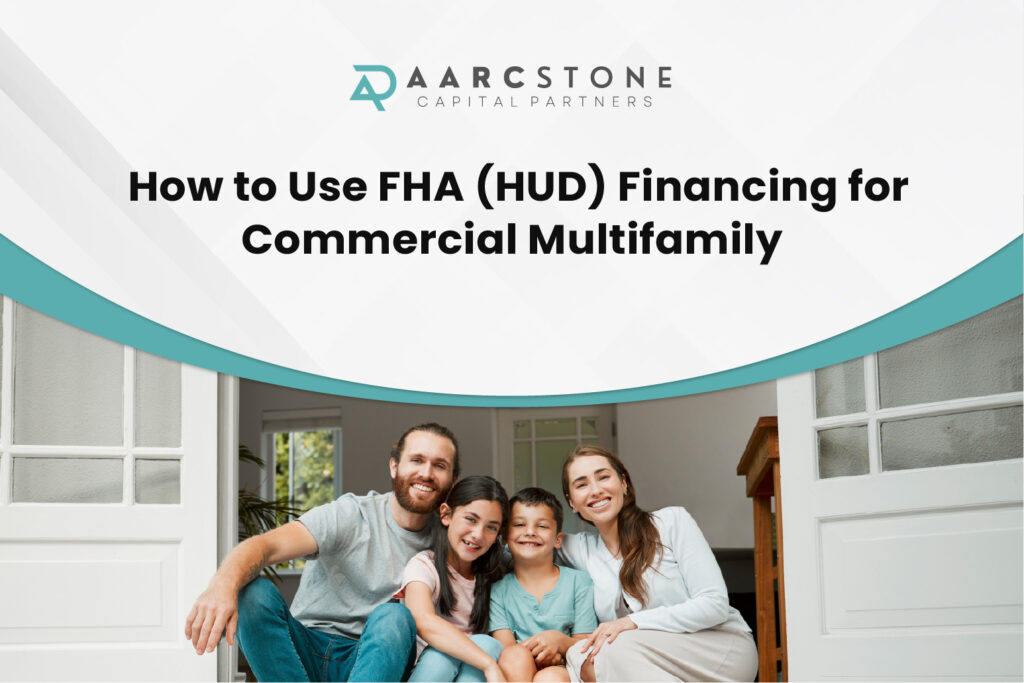
Overview of HUD Multifamily Programs
HUD’s multifamily lending programs are structured to support institutional-scale investments. Section 223(f) is used for purchasing or refinancing existing rental housing, while Section 221(d)(4) supports new construction or substantial rehab. Both require HUD-approved lenders and compliance with the MAP Guide underwriting protocols (hud.gov).
Program Features & Underwriting Parameters
HUD 223(f) – Acquisition / Refinance
- Term & Amortization: Up to 35 years, fully amortizing (multifamily.loans).
- Leverage:
- Up to 87% LTV for market-rate assets
- Up to 90% LTV for affordable or rental assistance properties (adroccap.com, hud223f.loans).
- Up to 87% LTV for market-rate assets
- DSCR (Debt Service Coverage Ratio): Minimum of 1.15x for market-rate; 1.11x for affordable housing (adroccap.com).
- Interest Rate: Historically competitive; from 2020–2024, average rates ranged 2.6% to 5.65%; around 5.66% in 2024 (adroccap.com).
- Other Features: Loans are non-recourse, fully assumable, and may include structured prepayment/protection schedules (hud.loans).
HUD 221(d)(4) – Construction / Substantial Rehab
- Term & Amortization: Up to 40 years plus construction period (hud.gov).
- Leverage:
- Up to 90% LTC for affordable housing; generally up to 85% for market-rate (hud221d4.loan).
- Up to 90% LTC for affordable housing; generally up to 85% for market-rate (hud221d4.loan).
- DSCR: Similar to 223(f), around 1.11x for affordable and 1.15x for market-rate.
Statutory Loan Limits
HUD sets per-unit statutory mortgage limits to cap their exposure. For 2024, the basic limits for 223(f) are approximately $119,977 per unit (non-elevator) and $145,833 per unit for elevator-type buildings. These increased limits reflect rising development and acquisition costs nationwide.
Performance & Volume Trends
In FY 2024, FHA (via HUD) endorsed or guaranteed 374 multifamily and healthcare loans, totaling $7 billion—on track for the lowest annual volume in over a decade.
Summary Table
Program | Term / Amortization | Max LTV / LTC | DSCR Requirement |
HUD 223(f) | Up to 35 years, fully amortizing | 87% (market), 90% (affordable) | 1.15x (market), 1.11x (affordable) |
HUD 221(d)(4) | Up to 40 years + construction | ~85% (market), 90% (affordable) | Similar to 223(f) |
Key Investor Considerations
Interest Rate Competitiveness
HUD rates in 2024 reached ~5.66% for 223(f) loans, remaining below many conventional options.
Assumability & Structure
Loans are non-recourse and assumable with HUD and lender approval.
Program Access
Only MAP-approved lenders can originate these loans under strict MAP Guide standards.
Loan Limits
Statutory per-unit caps may restrict maximum financing regardless of asset value.
Market Timing
Slower processing and reduced volume in FY 2024 mean borrowers should plan for extended timelines.
Conclusion
HUD multifamily financing is a strategic option for investors seeking long-term, fixed-rate, high-leverage, non-recourse debt. While the process is compliance-heavy and time-intensive, it offers substantial advantages for stabilized acquisitions, new development, and affordable housing projects—making it a powerful tool for those focused on multifamily real estate investments.
